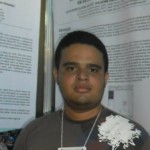- This topic has 42 replies, 9 voices, and was last updated 9 years ago by
 Josh Weber.
Josh Weber.
-
AuthorPosts
-
-
October 29, 2014 at 8:54 am #14638
 Heitor GalvaoParticipant
Heitor GalvaoParticipantGood day, please can you tell me how to configure references the parameters of a DCF according to this network in annex
Attachments:
-
October 29, 2014 at 10:45 am #14640
 Heitor GalvaoParticipant
Heitor GalvaoParticipantWant to better understand the parameters of the DCF, can someone help?
-
October 29, 2014 at 11:57 am #14643
 Heitor GalvaoParticipant
Heitor GalvaoParticipantA brief explanation of SMF and DCF, someone has good books about SMF and DCF?
-
October 29, 2014 at 11:58 am #14644
 Heitor GalvaoParticipant
Heitor GalvaoParticipantArticles also please
-
October 29, 2014 at 12:01 pm #14645
 Heitor GalvaoParticipant
Heitor GalvaoParticipantI didn’t find any topic here on the forum about SMF, so about DCF
-
October 29, 2014 at 2:47 pm #14670
Damian Marek
ParticipantAn easy way to do it is to match the lengths of the fibers and then set the dispersion to the opposite (negative) of the transmission link. The amount of broadening a pulse experiences is a linear expression involving length and also D. So you could half the length and double the dispersion parameter. If you want to include third order dispersion and multiple frequencies (dispersion is a function of wavelength) it can be a lot more complicated.
-
October 29, 2014 at 9:26 pm #14691
 Heitor GalvaoParticipant
Heitor GalvaoParticipantWhat are the correct values of variables such as DCF’s area effectively?
-
October 30, 2014 at 8:58 am #14698
Damian Marek
ParticipantThe effective area parameter is used in our simulation to model nonlinear effects (not dispersion), so you should use the effective area that is attributed to the fiber that you are simulating. A common value and the default we use is 80 um^2.
In a real life scenario a DCF might have a different value since the waveguide might have a different structure (smaller or bigger). You can use OptiFiber to calculate its effective area or you can use the link below to read about a similar topic. I made a matlab/Optisystem file that demonstrates how to calculate the effective area from a spatial distribution.
Regards
-
October 30, 2014 at 10:44 am #14703
 Heitor GalvaoParticipant
Heitor GalvaoParticipantThanks Damian, I’ll check
-
April 9, 2015 at 7:18 pm #19532
 Josh WeberParticipant
Josh WeberParticipantHello. This is regarding post #14698 above.
Damian, you mentioned that “The effective area parameter is used in our simulation to model nonlinear effects (not dispersion),…”. Is there an alternative way to take effective area into account to model modal dispersion in the simulation?
Thanks.
-
April 10, 2015 at 8:53 am #19558
Damian Marek
ParticipantYes, but you would need to use a different component. The Optical Fiber component models a singlemode fiber.
You can try either the Linear Multimode Fiber or one of the spatial models in the Multimode Library/Optical Fibers folder.
The Linear Multimode Fiber allows you to explicitly state the modal delay, whereas the two spatial components will calculate the modal dispersion from the actual modes that exist for the described index of refraction distribution. If you get confused by the difference just take a look at the associated Help for each.
Cheers!
-
April 10, 2015 at 10:56 am #19564
 Josh WeberParticipant
Josh WeberParticipantExcellent! Thank you, Damian.
-
-
-
November 6, 2014 at 6:40 pm #15026
Ravil
ParticipantI would also recommend to look at G.652-G.655 recommendations of ITU-T about SMF and DCF/NZDSF for general knowledge…
-
November 6, 2014 at 7:52 pm #15032
 Heitor GalvaoParticipant
Heitor GalvaoParticipantRavil you have them in your files?
-
November 10, 2014 at 11:23 am #15143
Alessandro Festa
ParticipantHeitor please note that usually DCF has smaller area than standard G652, this has an impact if its input power is high…if ou want more information I can check if I have something in my folders.
-
November 11, 2014 at 6:45 pm #15226
 Heitor GalvaoParticipant
Heitor GalvaoParticipantPlease check your files
my compliments -
November 13, 2014 at 7:20 am #15323
Alessandro Festa
ParticipantIf you give me your email I can send you a .txt file with Area vs wavelength
-
November 13, 2014 at 12:03 pm #15346
 Heitor GalvaoParticipant
Heitor GalvaoParticipantfollow email: heitorbrunogalvao@gmail.com
-
-
-
November 12, 2014 at 12:51 pm #15283
Ravil
ParticipantHi Heitor, sorry for late reply. The files of ITU-T recom. I mentioned before are attached. You should be able to find info about DCF in chapter 3 of G.655 file.
Attachments:
-
November 13, 2014 at 12:05 pm #15347
 Heitor GalvaoParticipant
Heitor GalvaoParticipantRavil thank you!!
-
November 12, 2014 at 12:52 pm #15285
Ravil
ParticipantThe other attachment is here…
Attachments:
-
November 13, 2014 at 12:06 pm #15348
 Heitor GalvaoParticipant
Heitor GalvaoParticipantAgain Ravil thank you!!
-
November 12, 2014 at 1:08 pm #15290
Ravil
ParticipantJust for your information, if you go to ITU-T website you can even find this recom. even in your language if you like.
-
November 13, 2014 at 12:15 pm #15349
 Heitor GalvaoParticipant
Heitor GalvaoParticipantI prefer it to be in English so I can train, thanks for always be helpful and excellent tips Ravil
-
-
November 13, 2014 at 7:06 am #15322
 Salwa MostafaParticipant
Salwa MostafaParticipantHi Heitor Galvao
Where is the DCF component in optiwave library ?
Thanks in advance
-
November 13, 2014 at 12:20 pm #15350
 Heitor GalvaoParticipant
Heitor GalvaoParticipantThe optisystem offers the block “optical fiber” you will move on his properties to make it a DCF or SMF, follows where you can find him:
Default/Optical Fibers Library/Optical Fiber
my compliments
-
-
November 13, 2014 at 12:28 pm #15352
Ravil
Participantok, I see. You are welcome!
-
November 13, 2014 at 12:33 pm #15353
Ravil
ParticipantFor engineering approach, I would recommend you “Optoelectronics and Photonics: Principles and Practices” S. O. Kasap. It’s easy to read and not too big in size. Unfortunately, I don’t have it in e-version.
-
November 13, 2014 at 1:07 pm #15355
 Heitor GalvaoParticipant
Heitor GalvaoParticipantThanks Ravil by indication, please look at the private message that I sent
my compliments
-
-
November 24, 2014 at 10:27 am #15943
vignes
Participantdear heitor,
i just saw ur post regarding dcf, i sent one book to ur private id , refer that book and also make some clarification if need
-
November 24, 2014 at 1:06 pm #15944
Ravil
ParticipantHi Vignes, what book do you recommend? (just curious…)
-
November 24, 2014 at 5:38 pm #15950
 Heitor GalvaoParticipant
Heitor GalvaoParticipantTell your email that I submit the material
-
November 25, 2014 at 3:11 am #15996
vignes
Participantdear ravil,
dcf by siddarth ramachadran fiber based dispersion
-
-
November 24, 2014 at 5:18 pm #15947
 Heitor GalvaoParticipant
Heitor GalvaoParticipantMany thanks Vignes excellent book
my compliments -
March 3, 2015 at 1:27 pm #18204
Dr Rk Sethi
ParticipantIt has been observed that dispersion of a standard single mode fiber (SMF)is lowest at 1300 nm, whereas it has minimum attenuation at 1550 nm. But at 1500 nm wave length the dispersion is higher. The problem of dispersion can be compensated by inserting an element that imposes dispersion on the optical signal that is opposite (negative) to that imposed by optical fiber. Most common is the use of the dispersion compensation fiber (DCF), with strong negative dispersion, placed at regular intervals along the link It can actually reverse the effects of dispersion suffered by 1550 nm signals that traverse standard single-mode fiber. But it has the disadvantage of high cost, physical size, signal delay and lack of adaptability. The attenuation of the DCF requires additional optical amplifiers, which introduce additional optical noise.
-
March 3, 2015 at 8:30 pm #18205
Ravil
ParticipantHi Rk Sethi,
Do you have an idea how often DCFs are used for dispersion compensation in the way you described above? In other words, is it still common application of DCF now-days when DBGs and electronic compensation is widely used?
-
March 3, 2015 at 9:03 pm #18212
Dr Rk Sethi
ParticipantThe physical characteristics of dispersion & the resulting signal distortion have been studied extensively and different techniques for the dispersion compensation have been reported. There are several different methods that can be used to compensate for dispersion, including DCF, chirped Bragg gratings, all-pass optical filters and optical phase conjugation. These methods restore the signal such that it can be received in a normal receiver.
An alternative method is to detect the dispersed signal and perform the dispersion compensation electrically.
Fiber Bragg grating (FBG), which is widely used in wavelength filtering and smart sensing devices has become a very important technique for making tunable dispersion compensators. Ken-ichi Kitayama et al. in have investigated both theoretically and experimentally the dispersion effect of FBG used as the filter on DWDM millimeter-wave optical signal transmissions. -
March 4, 2015 at 11:52 am #18261
Ravil
ParticipantThank you very much for your detailed answer, Rk Sethi!
Just wanted to clarify one moment:
what is the main advantage of DCF dispersion compensation in comparison with other techniques?-
March 4, 2015 at 12:58 pm #18270
 alistuParticipant
alistuParticipantThe main advantage?Just being “straightforward”!
Using DCF, you just need to calculate fiber dispersion and use DCF to compensate the cumulative amount of dispersion caused by the line.-
March 4, 2015 at 9:49 pm #18291
Ravil
ParticipantThanks for your answer Alistu, I was trying to find out the advantages of DCF vs DBG or electronic compensation (this method became very popular lately). As far as I found out from other sources:
1. DBG can’t cover such a wide range as DCF
2. Electronic compensation makes receiver more complicated and can be too costy.
Please, add/correct me if I’m wrong.
-
-
-
March 4, 2015 at 10:45 pm #18299
Dr Rk Sethi
ParticipantWelcome Ravil
-
March 4, 2015 at 9:47 pm #18290
-
March 4, 2015 at 9:51 pm #18292
Ravil
ParticipantRk Sethi, Thanks for your detailed explanation again!
-
-
AuthorPosts
- You must be logged in to reply to this topic.

